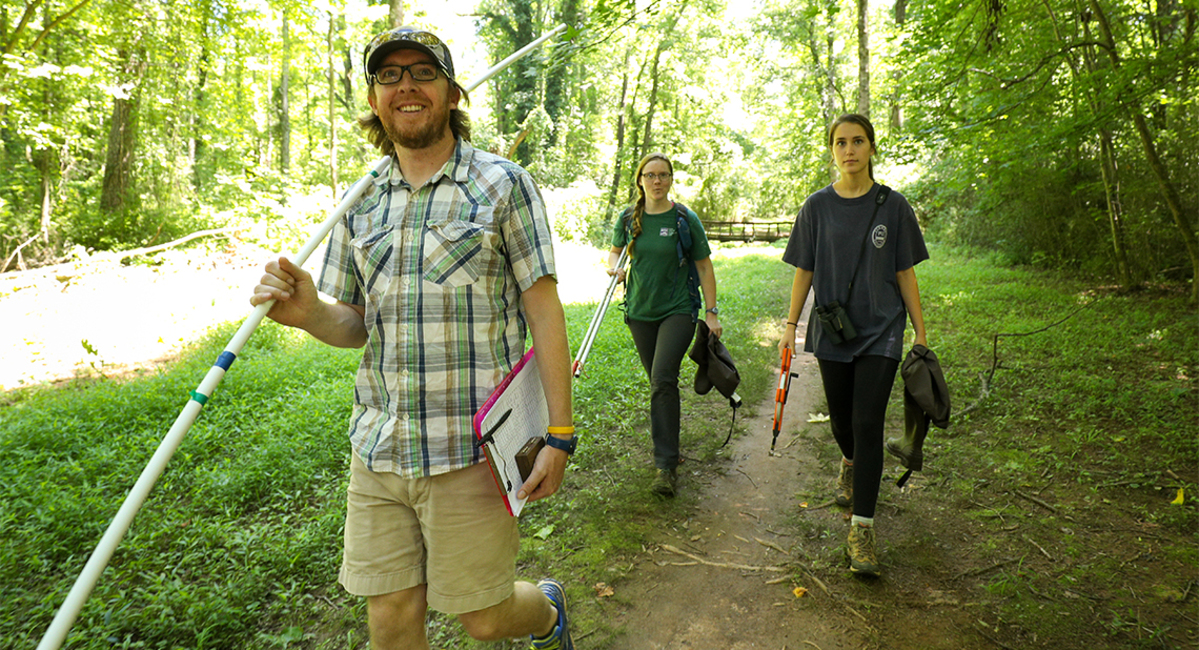apply for the winter 2026 citizens planning academy!
The Citizens Planning Academy is returning early in the new year with a new schedule. Learn more and apply today!

Dr. John Quinn: We should see waterways & forests as economic assets
This is an excerpt from the Spring/Summer 2020 issue of the Upstate Advocate, Upstate Forever’s twice yearly publication. To read the entire newsletter, click here. If you’d like to be added to our mailing list to receive future issues, please email athacker@upstateforever.org.
Dr. John Quinn is the Henry Keith and Ellen Hard Townes Professor of Biology and Director Environmental Studies at Furman University and has worked with Upstate Forever to map and identify the most critical lands for water quality protection.
The proud form of a solitary pine. The flowing curves of a headwater stream. Longstanding and iconic imagery with an instant appeal and a clear connection to a sense of place.
In the same way our forests are ever-shifting in structure and composition, responsive to a changing environment and demand for resources, the same gentle stream grows from a nickpoint on the ridge to a cascading waterfall. Importantly, these two elements of our shared environment, forests and water, are connected via feedbacks that benefit those of us living under their shadow and within a shared watershed.
The benefits provided by trees and water are important to consider as we anticipate future urban and suburban growth in Upstate South Carolina. The environmental aesthetic of the Upstate is something most, if not all, of us value. We can see this value in the poetic narratives of early explorers who describe the views of Table Rock from Pumpkintown in the 1700s through the present day in the use of Paris Mountain and the French Broad River on extremely popular and instantly recognizable t-shirts from our own local silk screen company, The Landmark Project. These relational values between people and nature and between people when in nature is the focus of much of our recent research highlighting the importance of maintaining and strengthening connections with nature to add value to conservation and regional land use planning efforts.
My colleagues at Furman University and I work to capture the multiple values of nature and its contribution to people of the Upstate — both relative value and a simple dollar value. For example, our work and others have shown that a forest buffer around waterways mitigates the effects of sediment and nutrient export on water quality. These data suggest that protecting and restoring headwaters and stream corridors will have an outsized impact on water quality throughout the region.
These efforts also enhance habitat for multiple wildlife species. Focused specifically on economics, we found that Greenville residents are willing to pay over $18 per year over 10 years to support forest restoration. More narrowly, we found that homebuyers paid more for homes closer to forests, paying $4,500 less as they were further away from forest cover. Shifting to water quality, we found a parallel economic value in demand for water quality for both farmers and consumers, suggesting that these groups share a common interest.
What is next? We need to make these values — economic and otherwise — clear to all citizens of the Upstate. We need to understand what people value in their water, forests, and grasslands and consider unique ways to collect these data. For example, a group from Minnesota used social media data to show that Minnesota residents valued clean water for recreation, spending over $20 more per trip to visit clean lakes vs. those perceived as polluted.
However, we need to be careful not to overemphasize economic metrics. Nature, including forests, Piedmont grasslands, and mountain streams, is worth more than a simple economic dollar value.
Views of the mountains as you drive through Travelers Rest, going hiking with friends and family amongst ridges and valleys, and fishing for trout in high-value streams while meditating on the beauty of the environment are all central to who we are and why we should conserve nature.
